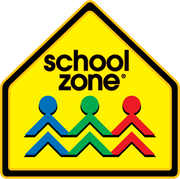Want to give your child strong roots for learning? Consider the words of Beethoven: "Music is the electrical soil in which the spirit lives, thinks, and invents." Want to help your child specifically become a strong reader? Music is part of the answer. Sing songs, explore lyrics, and practice musical rhymes and rhythms to help build language awareness.
Remember the ABC song?
This past March, Erica Warren posted "Did You Know Reading Skills Can Be Improved by Singing Songs?" to the Sensory Learning blog. In it, she writes, “Studies have shown that generations upon generations of mothers were not wrong—nursery rhymes and singing are excellent ways to help develop phonological awareness, which is one of the leading indicators of future reading ability.”
The lilt and cadence of everyday language becomes somehow “more” by way of song, and Warren describes three ways that songs help develop core reading skills. She points out that most songs are broken down in a way that segments “the syllables in the lyrics (words), which helps kids “hear the individual parts of words (segmentation and syllabication.” Also, many songs use rhyming words and patterns, which helps kids, including kids with dyslexia, develop auditory discrimination. And Warren says that learning songs also helps “support recall and develop short-term memory.” She notes that learning and reinforcing the alphabet with a song is one example.”
Suggesting that “Our brains appear to come wired and fully ready to dive into language and music,” Warren concludes that “Using music can help your child make greater gains in their reading while providing a fun, relaxing, and bonding experience.”
In 2018, Anita Collins, writing for the World Economic Forum, reported that “Neuroscience has found a clear relationship between music and language acquisition.” She continues, “Put simply, learning music in the early years of schooling can help children learn to read.”
Why is that? She says, “Music processing and language development share an overlapping network in the brain.”
The benefits of music extend in many directions
Bright Horizons, with 1,000+ child care centers worldwide, on their website cite a 2016 study at the University of Southern California’s Brain and Creativity Institute, which “found that musical experiences in childhood can actually accelerate brain development, particularly in the areas of language acquisition and reading skills.”
They break down some of the benefits at various ages, up through the teen years. Toddlers, they say, “love to dance and move to music. The key to toddler music is repetition, which encourages language and memorization.” Preschoolers “like songs that repeat words and melodies, use rhythms with a definite beat, and ask them to do things.” They also “enjoy nursery rhymes and songs about familiar things like toys, animals, play activities, and people.”
As it relates to toddlers, Playgroup NSW, an affiliation of more than 800 playgroups in New South Wales, Australia, expands even further on the benefits. It says that music can improve toddlers’ sensory development, can improve literacy and numeracy, acts as a mood filter, helps toddlers build coordination, and can help develop their coordination.
Fire up rhyme, rhythm, and movement
The Anywhere Teacher online learning system for ages 2-8, includes more than 150 songs. They span adorable tunes focused on a specific skill such as multiple counting and alphabet songs, as well as a measuring song, to the mostly-just-for-fun island rhythms of “Iguana,” the tropical beat of “Deep in the Jungle,” the silliness of “The Tumbly Bumble Bear,” and even holiday songs like “What’s on Santa’s Sleigh.”

Song and dance is about more than entertainment and burning energy. It’s a joyful way to enhance early learning!











